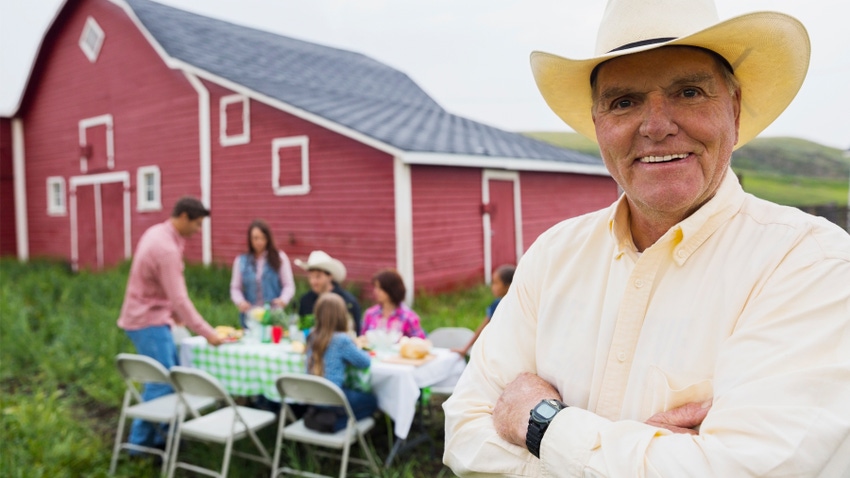
My grandmother used to say, “The family that prays together, stays together.” It was true in her day, with she and my grandfather raising 11 children through the Dust Bowl and Great Depression.
That’s probably why, in 2005, when our family hosted well over 200 of my closest Arens relatives on the homeplace for a big reunion, we began the evening meal with that old, familiar table blessing.
Everyone standing around the multitude of tables set up outdoors in the farmyard that day, from the oldest uncles and aunts to the youngest cousins, recited the prayer before the meal, “Bless us, oh Lord, and these thy gifts which we are about to receive, from thy bounty, through Christ our Lord.”
One of my cousins was standing next to me, and he whispered, “That’s what a family farm is all about.” Just as he said those words, everyone finished in unison, “Amen.” Had Grandma and Grandpa Arens been alive that day, they certainly would have smiled in approval.
Benefits of family meal
Eating together as a family, saying a blessing of thanksgiving for food to eat, is a family tradition among many rural families — still today. So, it shouldn’t be that much of a surprise that the folks at the National Center on Addiction and Substance Abuse at Columbia University would approve too.
For many busy families, farm families especially, eating in shifts is much, much easier. The kids want to eat early, because they are always hungry. Mom and Dad are busy working at off-farm or part-time jobs or busy with livestock and cropping duties in the field and farmyard. It takes real coordination to bring them all together for a family meal. But the results — and CASA agrees — are worth the trouble.
The more often children eat dinner with their parents, the less likely they are to smoke, drink or use drugs. According to CASA, teens who regularly eat dinner with their families also get better grades and do better in school. The better grades are associated closely with lower risk of substance abuse.
There are links between regular family meals and improved mental health. Adolescents and young adults who seek treatment for things such as anxiety, emotional problems and depression are about half as likely to participate in regular family mealtime. Children who eat regularly with their parents also have better nutritional eating habits, consuming more fruit, vegetables and less food items that are bad for them.
It seems the togetherness and the communication are the keys. In my youth, there were Sunday meals where everyone sat around the dinner table for hours, visiting, laughing and sharing experiences and stories. When we sit down to dine together, it isn’t all about the food. It’s about the togetherness, the connections we have to each other.
Together time
The dinner table is a place where problems get solved. It’s where relationships are healed. It’s where honesty often prevails. It can be something quite special for each member of the family.
These days, our family is just like everyone else’s. We are running. Kids have basketball games. Chores and other work duties need to be done. There is always an activity every evening for someone, so we often eat in shifts out of necessity. But very regularly, as often as is physically possible, we eat as a family around the dinner table.
What we eat is secondary. If the family meal takes place as a picnic out in the field by a tractor or combine, that’s just fine. The family time is what counts. Thanks Grandma!
Comments or questions? Drop me an email at [email protected].
About the Author(s)
You May Also Like






